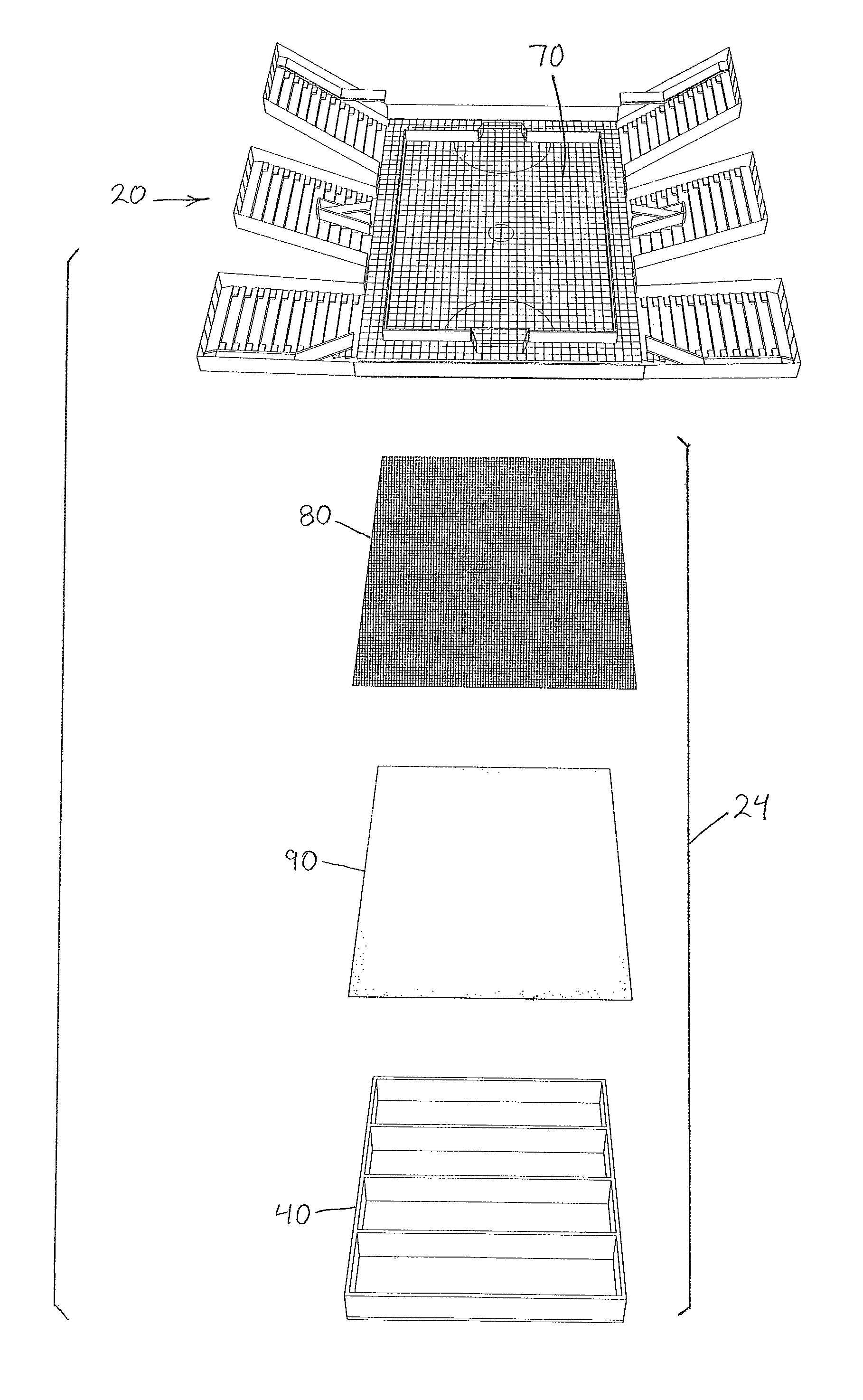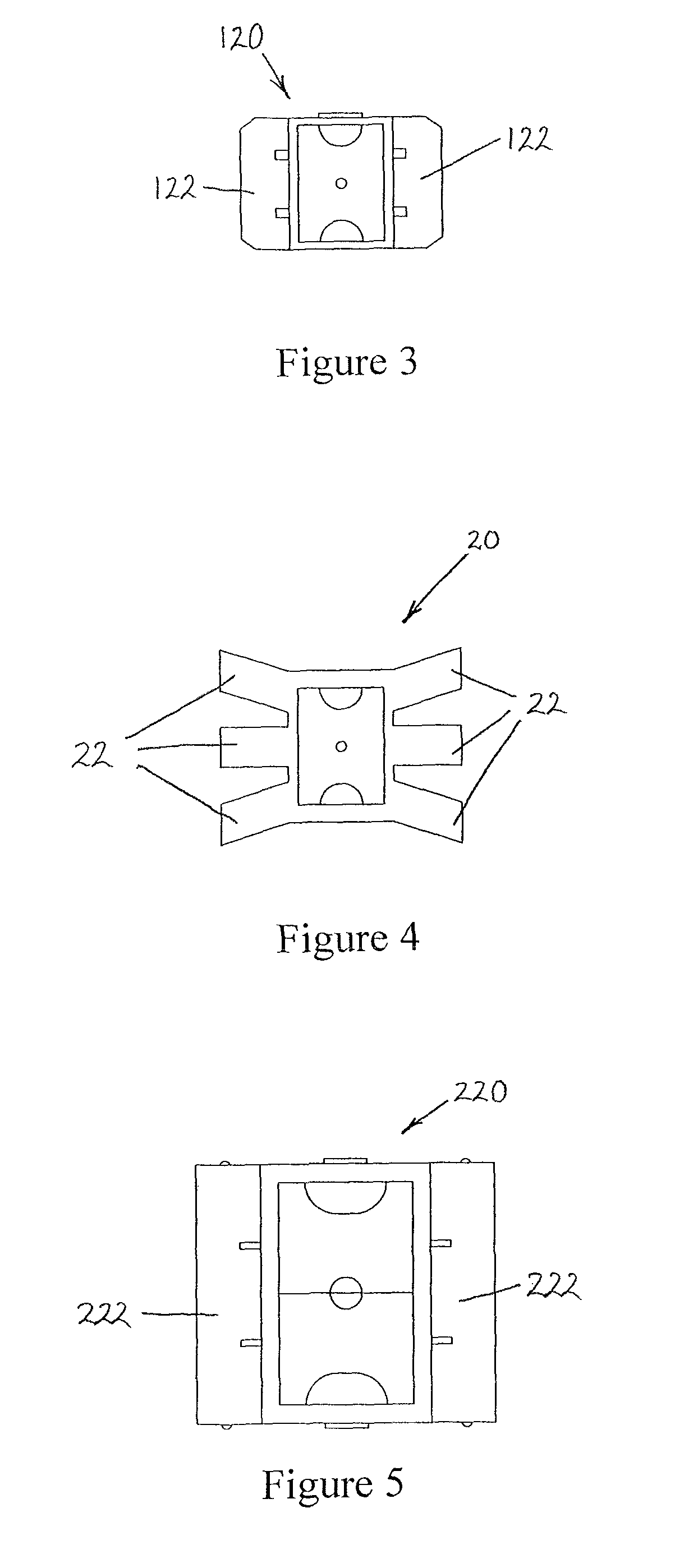Sports pitch rainwater harvesting systems suitable for use in developing countries
a technology for rainwater harvesting and sports pitches, applied in multi-stage water/sewage treatment, ways, ground pavings, etc., can solve the problems of rain that falls, many evaporate, and slow progress, and achieve the effects of slow progress, significant impact on ecosystem health and productivity, and prevention of flood damag
- Summary
- Abstract
- Description
- Claims
- Application Information
AI Technical Summary
Benefits of technology
Problems solved by technology
Method used
Image
Examples
Embodiment Construction
[0029]FIG. 1 illustrates an overall water harvesting system 20 that uses inclined (“raked”) sports stadium seating areas 22 and the playing surface 24 itself as a rainwater catchment surface. The playing surface 24 is a 3 layer permeable membrane that filters out coarse particulate matter, including plant material, animal feces, and insects such as mosquitoes. Under the permeable playing surface 24, a reservoir 40, shown in FIG. 2 as configured as a segmented tank, holds the harvested water until it is needed. A modular ceramic water filtration bank 50 and solar pumps (not shown) adjacent to the reservoir and integrated into the stadium form are used to filter the stored water to achieve drinkable, safe and clean water at points of use.
[0030]The water harvesting system 20 provides a clean local water source, and serves as a school for the community, encouraging the sharing of knowledge about rainwater harvesting, water filtration, and sustainable agricultural practices, actively sup...
PUM
 Login to View More
Login to View More Abstract
Description
Claims
Application Information
 Login to View More
Login to View More - R&D
- Intellectual Property
- Life Sciences
- Materials
- Tech Scout
- Unparalleled Data Quality
- Higher Quality Content
- 60% Fewer Hallucinations
Browse by: Latest US Patents, China's latest patents, Technical Efficacy Thesaurus, Application Domain, Technology Topic, Popular Technical Reports.
© 2025 PatSnap. All rights reserved.Legal|Privacy policy|Modern Slavery Act Transparency Statement|Sitemap|About US| Contact US: help@patsnap.com



